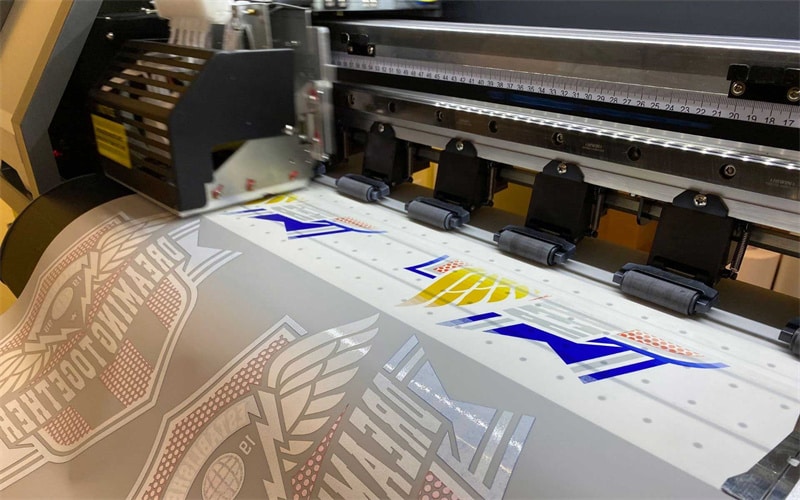In the realm of apparel printing, two methods have become the choices for small and large businesses. These printing methods are for creating vivid and durable designs on garments. The two printing methods are DTF printing and DTG printing. Although both techniques deliver high-quality outcomes, they possess multiple differences. To assist you in making a decision, let's explore each method in detail and determine which one best suits your printing requirements.
So, let’s understand the differences between DTG and DTP printing.
What is DTF Printing?

DTF, short for “direct to film,” involves printing designs onto a film that is subsequently transferred onto the fabric of the garment. This film consists of colored inks, allowing it to fuse with the fabric seamlessly once the design is printed onto the film, it is placed on the garment and heat-pressed to transfer the design.
The Advantages of DTF Printing
- Versatility: Versatile DTF printers work effectively on a range of materials such as cotton, polyester, blends, and even leather. This versatility makes it a suitable choice for types of garments.
- Vibrant Colors: DTF printing offers captivating colors that can enhance the most intricate designs. DTF printing is well known for securely adhering inks to fabrics, maintaining their vibrancy, and preventing fading over time.
- Durability: Durability is a characteristic of DTF printed designs. They can endure washing without compromising their quality. The ink becomes a part of the fabric, ensuring lasting color and resistance to fading or cracking.
What is DTG Printing?

DTG, which stands for “direct to garment,” involves using a printer (the Epson SureColor F2270 printer, for example) to apply ink onto fabric. This printing method resembles printing on paper. Instead, it focuses on applying ink onto garments.
The Advantages of DTG Printing
- Detail and Precision: DTG printing captures details and produces high-resolution prints. It works well for designs featuring text, complex patterns, or gradients since it can accurately reproduce them.
- Photo Realistic Prints: If you aim to replicate photographs or realistic images, DTG printing is a choice. It can faithfully reproduce the image's colors and tones, resulting in photo-realistic prints.
- Efficient Turnaround: Compared to printing methods, DTG offers a quicker turnaround time.
DTF printing and DTG printing are two methods that offer print quality. They have some key differences to consider when making a decision.
- Color Vibrancy: Both methods produce vibrant prints. DTF printing tends to result in bolder and more vibrant colors. This makes it ideal for designs that require saturation.
- Fabric Compatibility: DTF printing works well on fabrics such as cotton, polyester, and blends. On the other hand, DTG printing is best suited for garments made of 100% cotton or cotton blend fabrics as it requires materials for optimal results.
- Print Detail: When it comes to capturing details and producing high-resolution prints, DTG printing has an advantage. It excels at reproducing patterns, small text, and gradients – making it a preferred choice for precision-demanding designs.
- Production Speed: If you're looking for turnaround times, DTG printing is the option. It eliminates the need for screen setups or color separations allowing for production and delivery.
Considering these factors will help you decide which method suits your needs best.
When it comes to deciding between DTF printing and DTG printing, the choice depends on what you need.
If you value colors, durability, and versatility, DTF printing is the better printing option. It works well on fabrics. Produces prints that are highly vibrant and long-lasting even after repeated washing.
On the other hand, if you're looking for precision, details, and photo-realistic prints, then DTG printing is the way to go. It's perfect for capturing text or complex patterns because it excels at producing high-resolution prints.
Conclusion
In summary, both DTF printing and DTG printing offer print quality. Each has its own strengths and weaknesses. So, Consider your requirements and the material you plan to print on to choose for your needs.
